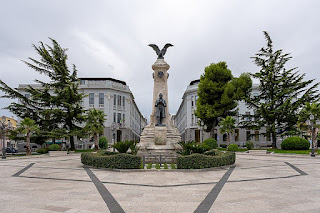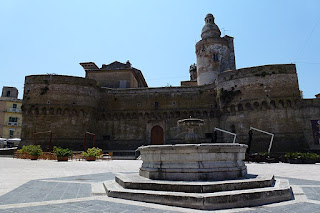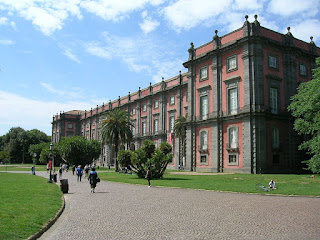Academic fled to England after exile from Naples
The poet and academic Gabriele Rossetti, who was a key figure in a revolutionary secret society in 19th century Italy known as the Carbonari, was born on this day in 1783 in the city of Vasto in Abruzzo.Gabriele Rossetti became a revolutionary
after moving to Naples as a student
A Dante scholar known for his detailed and sometimes controversial interpretations of The Divine Comedy and other works, Rossetti’s own poetry was of a patriotic nature and regularly contained commentaries on contemporary politics, often in support of the growing number of popular uprisings in the early 19th century.
He became a member of the Carbonari, an informal collective of secret revolutionary societies across Italy that was active between 1800 and 1831, promoting the creation of a liberal, unified Italy. He came into contact with them after moving to Naples to study at the city's prestigious university.
Similar to masonic lodges in that they had used secret signals so that fellow members could recognise them and even a coded language, the Carbonari were founded in Naples, where their membership included military officers, nobility and priests as well as ordinary citizens.
A librettist at the city’s Teatro San Carlo and later curator at the Capodimonte Museum, Rossetti’s standing in Naples society made him an important figure within the group, which was the driving force behind the 1820 uprising in the city which, with the help of a mutiny among the army, forced King Ferdinand I to agree to a constitution.
 |
| The Piazza Gabriele Rossetti in his home city of Vasto, with the monument to him in the centre |
This so outraged Rossetti that he published a poem that amounted to a tirade against Ferdinand’s tyranny. Immediately branding him a traitor, the King issued a warrant for Rossetti's arrest and announced a death sentence. Fortunately, Rossetti managed to escape, fleeing first to Malta, where he remained in hiding for three years before an admiral of the British Royal Navy helped him travel to London.
He settled in England, supporting himself by giving Italian lessons and publishing two volumes of commentary on Dante’s La divina commedia (The Divine Comedy).
The commentary claimed that The Divine Comedy was written in the code language of a humanistic secret society that was opposed to political and ecclesiastical tyranny. Rossetti’s interpretation is now regarded as unrealistic but at the time it helped him attain the position of professor of Italian at King’s College, London, a post he held until his eyesight began to fail in 1847.
In 1826 he had married Frances Mary Lavinia Polidori, daughter of another Italian exile in England, Gaetano Polidori. Their four children - Maria Francesca, Dante Gabriel, William Michael and Christina Georgina - all grew up to be distinguished writers or artists in their own right.
Rossetti died in London in April 1854 at the age of 71 and was buried in Highgate Cemetery. The main square in Vasto was named after him, with a monument to him at its centre.
Travel tip:The 15th century Castello Caldoresco presides
over the centre of the city of Vasto
Vasto is not a well known destination among overseas tourists but with an elevated position overlooking the Adriatic in the south of Abruzzo it is a small city well worth a visit, offering beautiful panoramic views of the coastline in addition to a charming medieval centre, with narrow alleyways and the impressive Castello Caldoresco. Built in the early 15th century, the square castle is built around an inner courtyard with cylindrical towers in three of the four corners. The Piazza Gabriele Rossetti is behind the castle. In addition to the attractions of the city, it is just a 15-20 minute walk down the hill to golden, sandy beach at Marina di Vasto, which while thronged by Italian families in July and August is relatively quiet outside the main Italian holiday season.
Travel tip:The Reggia di Capodimonte in Naples, home of
one of Italy's most important art collections
The Museo di Capodimonte, where Rossetti was curator before he was forced to flee the city, is an art museum located in the Reggia di Capodimonte, a grand Bourbon royal palace a few kilometres from the centre of Naples. Housing the most important collection of Neapolitan painting and decorative art, as well as works from other Italian schools of painting and ancient Roman sculptures, it is one of the biggest museums in Italy. The palace dates back to 1783, when it was built by King Charles VII of Naples and Sicily. Adjoining an area of woodland now known as the Real Bosco di Capodimonte, it was originally intended to be a hunting lodge but evolved as a replacement for the Reggia di Portici as the seat of Charles’s court. The King’s fabulous Farnese art collection, which he had inherited from his mother, Elisabetta Farnese, became the basis for the museum’s collection.
Also on this day:
1740: The death of Cardinal Pietro Ottoboni, patron of music and art
1907: The birth of entrepreneur Domenico Agusta
1915: The birth of jam maker Karl Zuegg
1940: The birth of racing driver Mario Andretti
1942: The birth of footballer and coach Dino Zoff



No comments:
Post a Comment